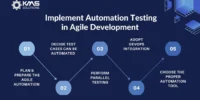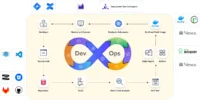Welcome to the era of cloud-native containerization, where agility and scalability are the keys to successful application deployment. In this dynamic landscape, Kubernetes has emerged as the go-to orchestration tool for managing containerized applications. Let’s explore some quick tips for harnessing the power of Kubernetes to streamline your container orchestration journey.
1. Embrace the Kubernetes Architecture
Understanding the architecture is fundamental to mastering Kubernetes. Get acquainted with key components like nodes, pods, and clusters. This foundational knowledge sets the stage for effective orchestration and empowers you to make informed decisions as you navigate the Kubernetes ecosystem.
2. Efficient Resource Management
Optimize resource allocation to enhance efficiency. Kubernetes allows you to define resource requirements for each container, preventing resource contention and ensuring optimal utilization. This proactive approach contributes to a smoother orchestration process and better overall system performance.
3. Leverage Labels and Selectors for Organization ️
Organize your resources effectively using labels and selectors. This allows you to categorize and group related components, making it easier to manage and orchestrate specific subsets of your application. Labels provide a flexible way to add metadata, facilitating streamlined control over your Kubernetes environment.
4. Emphasize Health Probes for Robustness
Enhance the robustness of your applications by implementing health probes. Kubernetes supports readiness and liveness probes, enabling the system to assess the health of your containers. This automated health monitoring ensures that only healthy instances are served, contributing to a resilient and reliable orchestration environment.
5. Secrets Management for Security
Prioritize security by effectively managing secrets within Kubernetes. Whether it’s API keys, passwords, or other sensitive information, Kubernetes provides a secure way to store and distribute secrets to your containers. Safeguarding sensitive data is a critical aspect of responsible container orchestration.
6. Explore Helm for Package Management
Simplify the deployment and management of applications with Helm, the Kubernetes package manager. Helm allows you to define, install, and upgrade even the most complex Kubernetes applications. This streamlines the packaging process, making it easier to share and reproduce your containerized applications.
7. Continuous Monitoring and Logging
Implement robust monitoring and logging solutions to gain insights into your Kubernetes environment. Tools like Prometheus and Grafana can provide real-time visibility into the performance and health of your containers. Proactive monitoring ensures that you can address potential issues before they impact your application’s availability.
Conclusion: Navigate the Cloud-Native Waters with Confidence
As you embark on your cloud-native containerization journey with Kubernetes orchestration, these quick tips serve as a compass, guiding you towards seamless deployment and efficient management. Embrace the power of Kubernetes, optimize your resources, and prioritize security to unlock the full potential of cloud-native applications.








